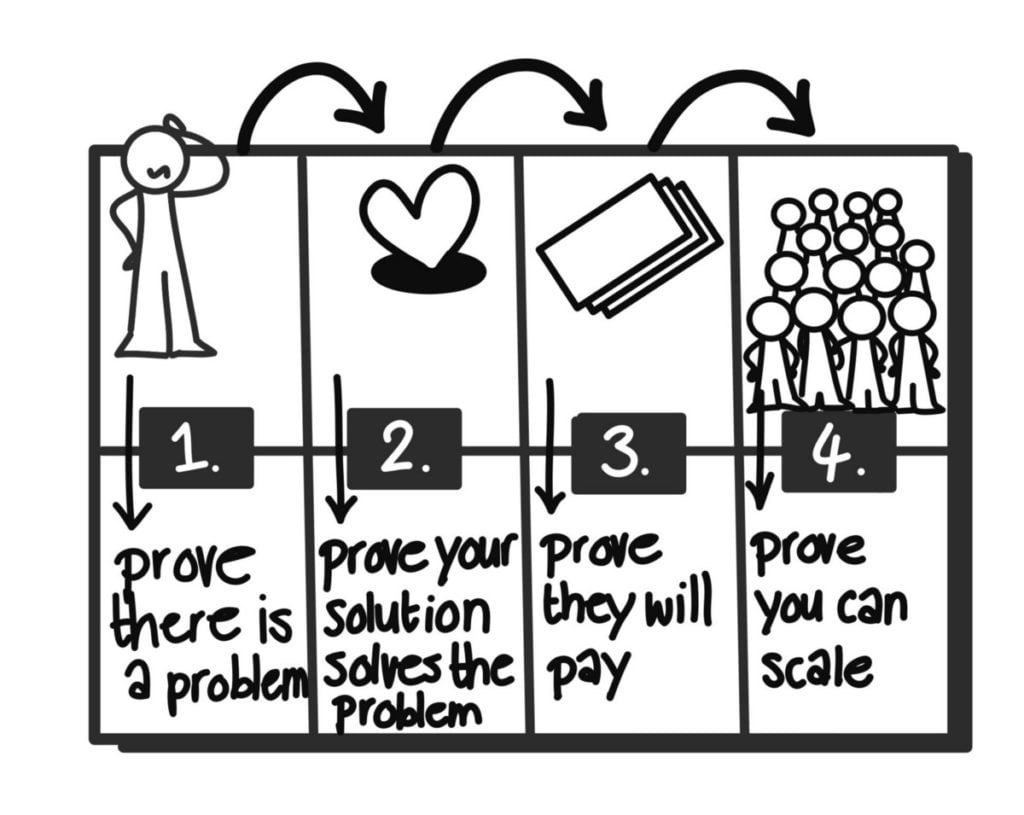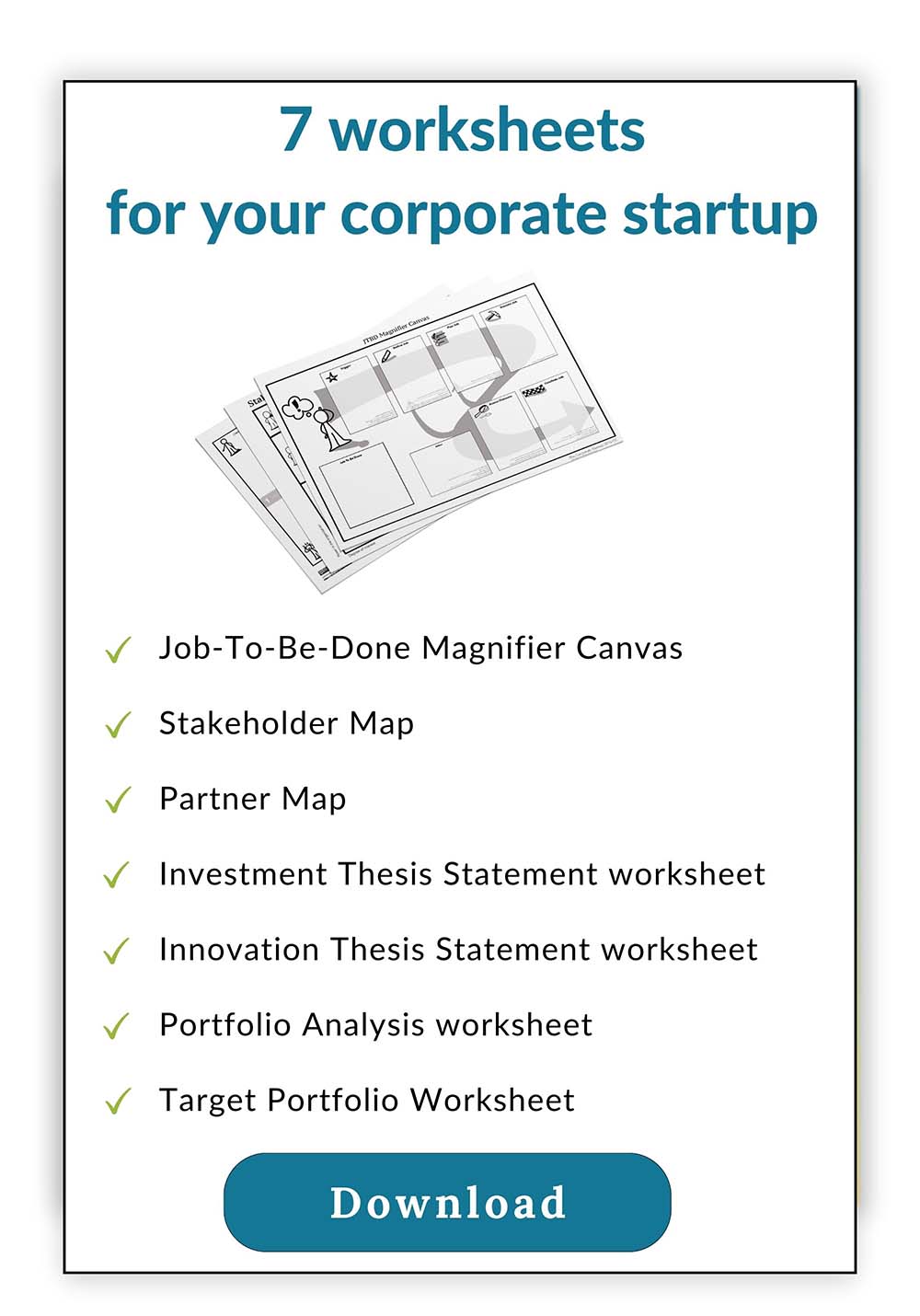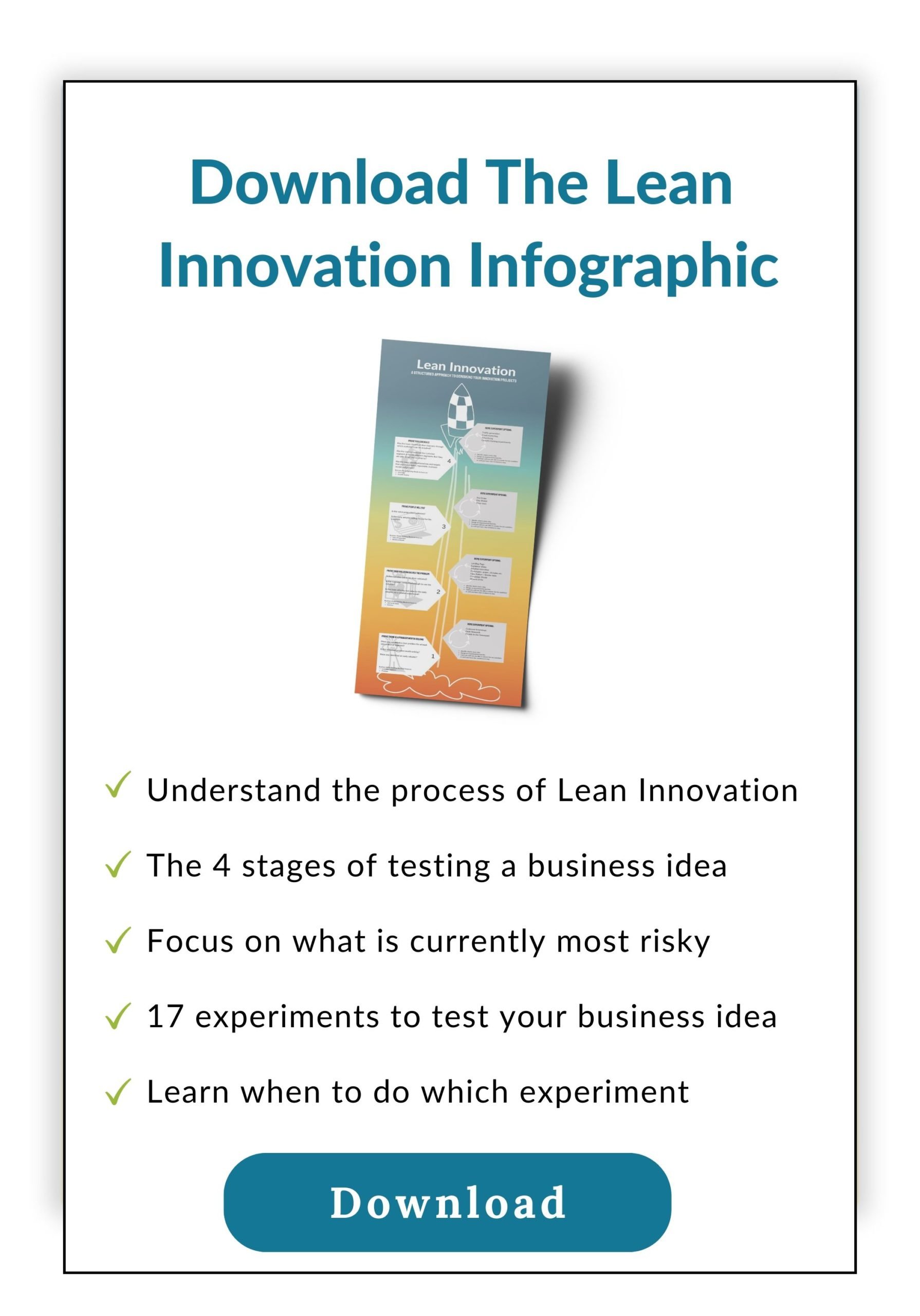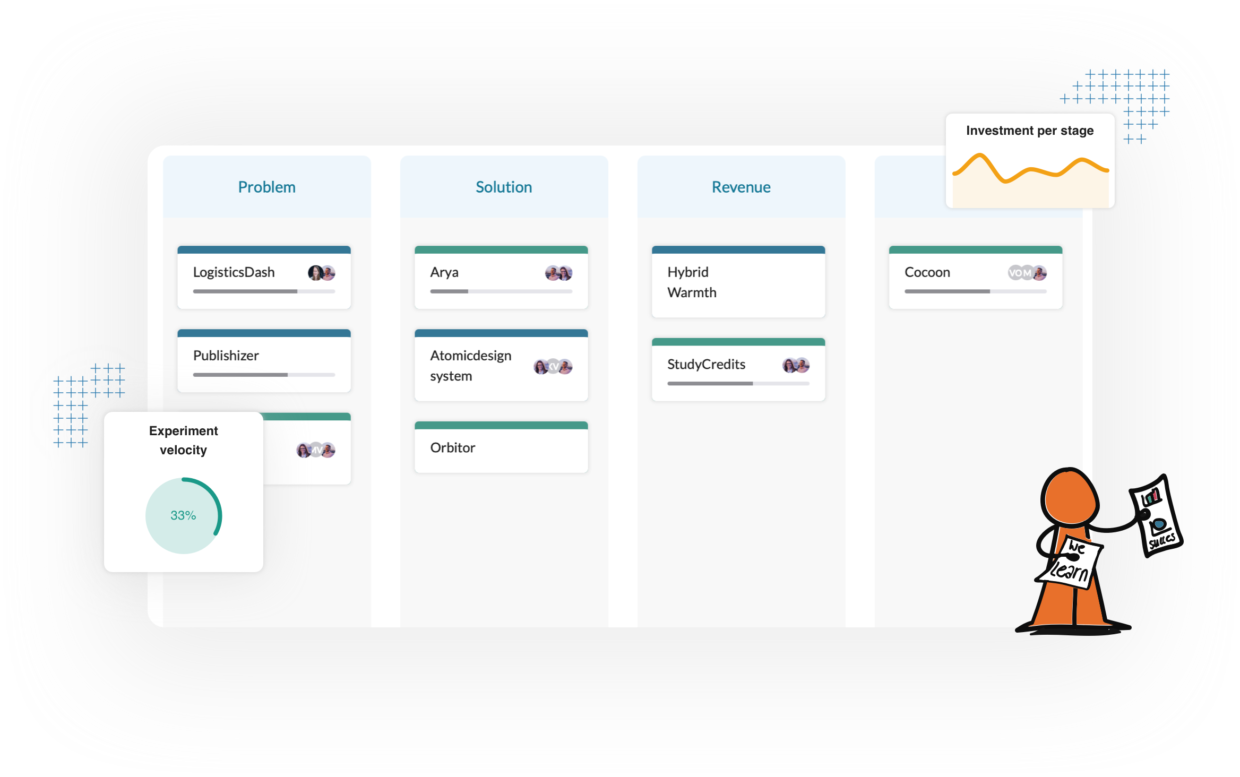The 24-month journey to product/market fit
Table of Contents
How long does it usually take to go from great idea to product/market fit, and what type of investment fits every stage?
After introducing our NEXT Canvas, we got quite a few responses about the time it takes to go through the different stages. Someone even called it crazy talk that it takes 3 to 6 months to define the problem and solution. So let’s dive a bit further into the journey to product/market fit, the time it takes to get there, and what type of investment is most suitable for the phase you are in.

As you can see in our NEXT Canvas above, there are roughly four phases every startup goes through to get to product/market fit. At first, you have to prove there is a problem, then prove your solution solves that problem, prove your customers will pay, and finally prove you can scale your business model.
Prove there is a problem
Most startup founders start with an idea—an idea for a product or a solution. But to start, it is important to figure out which problem you are actually solving for which customer. You have to take a step back and look at what your product is actually doing. What does it solve? And for who are you solving it?
It is easy to define the problem and the ideal early customer segment in a brainstorming session, but to prove that it is actually a problem and big enough to pay for takes time. There are weekends like Startup Weekend that help you run through the exploration phase. Still, you have to realize that the validation you get from talking to people on the street is purely an initial validation, and you have to really find your first early customers and make sure you validate with them instead. The first phase sounds like an easy one you can do quickly, but it is your whole business model’s foundation. It is very likely that when you reach the revenue model validation phase, you have to go all the way back and re-evaluate the choices you have made here.
The good thing about the problem validation phase is that you can easily do it next to your work and just the founding team. You don’t need designers, developers; you just need yourself. If you want to raise some capital at this stage, it will be from friends, family, and fools.
Expect to spend up to 3 months. There will be some iterating back and forth to the solution validation phase, figuring out what you are exactly solving and how you can do it.

[convertkit form=5141483]
Prove your solution solves that problem
Now comes the fun part. Proving your solution solves the problem for the ideal early customer. We’ve written before about why we stopped building MVPs. The term is too ambiguous and means something different for everybody. We like to talk about solution experiments, prototypes, and first versions instead.
When you begin your solution validation phase, you do several iterations with simple solution experiments. Ranging from explaining your solution to landing pages, solutions made out of paper, and clickable demos. That way, you can iterate fast and learn as much as possible without spending time developing an actual solution.
When you see that you have initial validation for a certain solution, build a prototype. A prototype should not take more than two to three weeks to develop. Keep it simple and see if the prototype can solve the problem when given to the customer.
Only after you have mostly proven your solution go out and build the first version. Even then, we like to build 80% in 20% of the time and not build 100% of the solution in mind because that usually takes 200%. Discuss what you can leave out to get it out as fast as possible. Iterating after launch is much easier than creating the perfect first version. That process is endless. Remember that the first iPhone didn’t even have copy/paste! You can leave out much more than you expect since you are still building to learn, not scale.
The solution validation phase easily takes up to 6 months. So together with the problem validation phase (you will do some iterating back and forth), expect to spend a total of 9 months before problem/solution fit. Pre-seed investment funds and angels are ideal for helping you through this phase. But if you can do without any funding, go for it!
Prove people will pay
Now the real hard part starts. Prove your customer will actually pay for your solution and pay enough to make it a viable business. We do many thought exercises with our startups where we ask how much revenue they need to make to consider the company to have found product/market fit. Now divide that by the price of a monthly subscription, the initial price for the product, or the money you can earn from advertising per user, and you realize that it is much harder to create a viable revenue model than you think. 200.000 euro yearly revenue sounds like it should be doable, but if that means you have to sell a monthly subscription to 20.000 people, you suddenly realize it is much harder to achieve that.
It is also very likely you have to go back to your customer segment and do some tweaks or pivots, your problem might not be big enough to pay enough money for, and your solution might not fit completely now your customers have to pay. It is easy to sell to the founders’ network, but you need to seriously expand your customer base before even considering product/market fit.
We have seen it can easily take up to another 15 months before finding product/market fit. Totaling the amount of time at 24 months already. And it is not uncommon or a shame when it takes longer. One or multiple seed investments fits best with this phase.
Prove you can scale
We sometimes joke to early-stage startups that finding the right channels and growth engine are luxury problems, but they are real problems nonetheless. You have found your product/market fit and are selling to a range of customers, but now it is time to expand your customer segment slowly and prove that you can both reach them and that your problem, solution, and revenue model also applies to them. Once again, you make iterations through all of the 3 previous phases.
Since you have found your product/market fit, are making revenue, and are ready to start scaling, a serious Series A investment makes sense. On the other hand, if your revenue is solid, you can decide to invest from your own balance sheet and build a ‘normal’ non-VC-backed company.
How long this phase takes? You want to keep expanding your customer segment until you reach world domination.
[convertkit form=5116887]
How long does each phase take?
Prove your problem: 3 months — money from friends, family, and fools
Prove your solution: 6 months — pre-seed and angels
Prove they will pay: 15 months — seed and extended seed investments
Prove you can scale: At least another 24 months — series A, B, C
Please note: The journey is different for each startup. What works for you will not work for someone else. The journey we describe in this article is a generalization from mentoring hundreds of startups in the last 8 years.
Help us validate this article with real data
The timelines in this article are based on our experience coaching hundreds of startups in the last 10 years. They are therefor based on our observations, and conclusions.
We don’t have the data to back it, nobody does.
That’s why we started a survey to get the data behind our assumptions. Our goal is to have at least 500 startups filling in the survey to better understand how long it really takes to reach product/market fit.
Are you are startup founder? Help us out by filling in our product/market fit research survey!

Timan Rebel has over 20 years of experience as a startup founder and helps both independent and corporate startups find product/market fit. He has coached over 250+ startups in the past 12 years and is an expert in Lean Innovation and experiment design.

